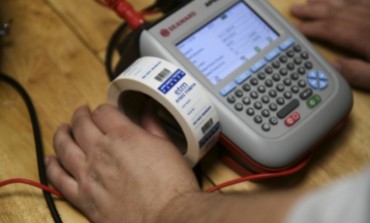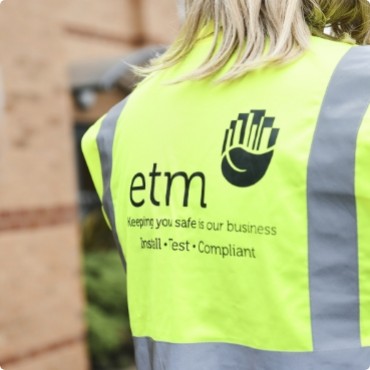Fixed wire testing, formally known as an Electrical Installation Condition Report (EICR), is a critical safety requirement that many property owners find confusing when it comes to timing and frequency. Understanding when your electrical installation needs testing isn't just about compliance – it's about protecting lives, property and your legal position.
In this article, we'll explore some of the industry-recommended testing intervals, whilst also going into detail on what your legal requirements are as a property or business owner.
Legal Requirements for Fixed Wire Testing Frequency
The frequency of fixed wire testing depends primarily on the type of property and its use. For residential rental properties, current regulations require landlords to obtain an EICR at least every five years, or at the change of tenancy if more than five years have passed since the last inspection. This requirement applies to all private rental properties in England and has been mandatory since July 2020.
Commercial and industrial properties face slightly different requirements, with most needing fixed wire testing every five years, though some high-risk environments may require more frequent inspections. Public buildings, schools and healthcare facilities often have their own specific requirements, sometimes requiring annual inspections depending on the nature of their operations and local authority requirements.
Industry-Recommended Testing Intervals
Beyond legal minimums, the electrical industry provides guidance on optimal testing frequencies based on installation type and risk factors. The Institution of Engineering and Technology (IET) publishes recommended intervals that often exceed legal requirements but provide enhanced safety margins.
For domestic properties, the recommended interval is typically ten years for owner-occupied homes and five years for rental properties. However, these recommendations can vary based on the installation's age, condition and usage patterns. Older installations or those in challenging environments may benefit from more frequent inspection.
Commercial properties generally require testing every five years, but this can reduce to as little as one year for installations in harsh environments or those supporting critical operations. Temporary installations, such as those found on construction sites, typically require testing every three months due to their increased exposure to damage and wear.
What Factors Influence Testing Frequency?
Several key factors can affect how often your fixed wire testing should be carried out, regardless of the standard recommended intervals. The age of your electrical installation plays a significant role – installations over 30 years old may benefit from more frequent testing as components naturally deteriorate and safety standards evolve.
Environmental conditions significantly impact testing frequency requirements. Properties exposed to moisture, dust, chemicals or extreme temperatures will typically need more frequent inspections. Similarly, installations subject to heavy usage, vibration or frequent modifications may require shortened testing intervals to maintain safety.
The nature of the building's use is equally important. Healthcare facilities, schools and other buildings where vulnerable people spend time often require more frequent testing. Buildings with sleeping accommodation, such as hotels or care homes, may also need shorter intervals due to the increased fire risk implications of electrical faults.
What are the Consequences of Delayed Testing?
Failing to carry out fixed wire testing within the required timeframes can have serious implications beyond simple regulatory non-compliance. For landlords, letting a property without a valid EICR is now a criminal offence that can result in fines of up to £30,000 and potential prosecution.
Insurance implications can be equally serious. Many insurance policies require valid electrical certificates and claims may be refused if your electrical installation hasn't been tested within the required timeframes. Even if your policy doesn't explicitly require testing, insurers may argue that failure to maintain proper electrical safety demonstrates negligence, potentially voiding coverage.
The safety risks associated with delayed testing are perhaps the most concerning. Electrical installations deteriorate over time, and problems that might be identified and resolved during routine fixed wire and PAT testing can develop into serious hazards if left unchecked. Fire, electric shock and even fatal accidents can result from electrical faults that proper testing would have identified.
Planning Your Testing Schedule
Effective planning of your fixed wire testing schedule helps ensure compliance while minimising disruption and costs. Many property managers find it helpful to maintain a testing diary that tracks when each property was last tested and when the next inspection is due.
For landlords with multiple properties, spreading testing throughout the year can help manage costs and ensure that expertise is available when needed. Booking testing well in advance also helps secure preferred contractors and testing dates that work around tenant requirements and property availability.
Consider the practical aspects of testing when planning your schedule. Testing requires access to all areas of the property and may involve temporary power isolation which can slow operations or bring them completely to a halt in some cases, and that's without considering what the report might return in terms of remedial requirements. Planning around tenant holidays, business closure periods or planned maintenance can help minimise disruption while ensuring thorough inspection.
Early Warning Signs That Testing May Be Needed
While adhering to recommended testing intervals is essential, certain warning signs may indicate that earlier testing is advisable. Frequent tripping of circuit breakers or RCD devices can indicate developing electrical problems that warrant professional investigation, even if your scheduled testing date hasn't arrived.
Physical signs of electrical problems should never be ignored. Scorch marks around outlets, burning smells, flickering lights or mild electric shocks from appliances or switches all suggest electrical issues that require immediate professional attention. In these circumstances, emergency testing and remedial work may be necessary regardless of your normal testing schedule.
Changes to your property's electrical load or usage patterns might also warrant earlier testing. Installing new high-power equipment, adding circuits or significantly changing how spaces are used can affect electrical safety and may justify bringing forward your next inspection.
Choosing the Right Testing Schedule for Your Property
Determining the optimal testing frequency for your specific property requires balancing legal requirements, safety considerations and practical factors. Start with the legal minimum requirements for your property type, then consider whether additional risk factors warrant more frequent testing. High-value properties or those housing vulnerable occupants may justify testing intervals shorter than legal minimums. Similarly, properties with aging electrical installations or those in challenging environments might benefit from annual inspection rather than the standard five-year cycle.
Consult with qualified electrical contractors who can assess your specific circumstances and recommend appropriate testing frequencies. Experienced contractors understand the interplay between different risk factors and can help you develop a testing schedule that optimises safety, compliance and cost-effectiveness.
Conclusion
Determining how often fixed wire testing should be carried out requires understanding legal requirements, industry recommendations and your property's specific risk factors. While minimum legal frequencies provide a baseline, optimal safety often requires more frequent inspection, particularly for older installations or challenging environments.
For expert guidance on fixed wire testing schedules and professional electrical safety services tailored to your property requirements, contact Electrical Test Midlands. Our experienced team can help you develop an effective testing strategy that ensures compliance while protecting your property and occupants.

PAT Testing Offer
We are committed to ensuring the safety and compliance of your electrical equipment through our professional Portable Appliance Testing (PAT) services.
As a token of our appreciation for choosing us, we’re excited to offer you an exclusive 10% discount on all PAT testing services!
FIND OUT MORE





